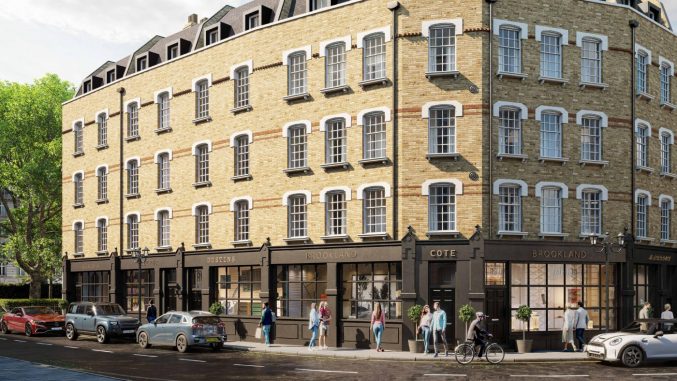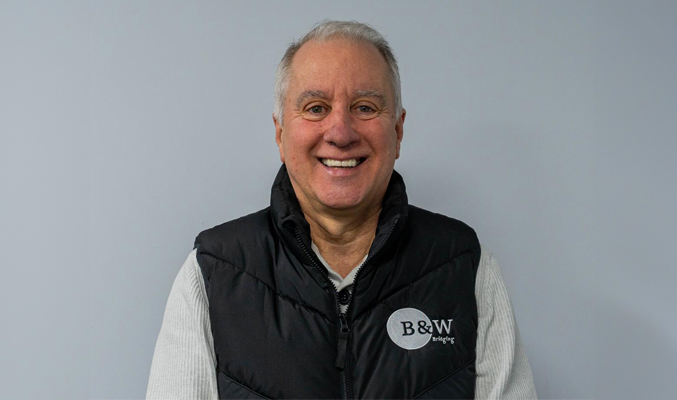Honeybees, modular homes and top-secret plans: 7 questions about ESG with Wes Friedel
By Hannah Duncan

Sometimes an interview is so good, it feels criminal to dissect it and sprinkle it into an article.
Occasionally the answers deserve an unedited page of their own. And that’s the origin of this article with Wes Friedel, Head of Credit at Impact Lending.
Armed with a stack of punchy but messy questions, I was fishing for new hooks for an upcoming article on ESG.
What I emerged with was a beautifully concise interview, which explained the philosophy of sustainability like a dream.
So here it is: Seven questions about ESG with Wes Friedel.
How would you describe the overall progress of environmental initiatives within the bridging industry?
As an industry I believe we are slowly getting there but have much work to do, sadly it is not contained to just the bridging industry either. The recent measures in cutting VAT for energy saving materials is a starting opportunity, but in general we need to do more.
The main challenge for me is educating the audience and delivering clearer messaging. I recently came across a social media post which asked the audience –“If two houses were built, one using traditional and the other sustainable/eco materials, would you buy the ‘standard price’ traditional house or the ‘more expensive’ sustainable house?”
Naturally, the price you pay for a house is a big decision, and it’s no secret that traditional builds are often cheaper to buy. However, a house built through sustainable means costs much less to run yet is more expensive to buy on ‘day one’.
If the audience is clearly informed of this, it would provoke a completely different mind-set to how much people are willing to spend on owning a property – taking the whole life-span into consideration.
What unique or different environmental initiatives (other than energy efficiency loans) are you seeing in the bridging industry?
A couple of us lenders have products aimed at sustainable housebuilding projects, which offer better terms to borrowers and developers, that are actively incorporating sustainable, or energy efficient measures and materials into their projects.
Naturally not every lender can incorporate initiatives into bridging products but having seen some of the longer term lenders launching BTL products aimed at sustainable properties, there are signs that lenders are putting more thought into the subject.
What are you doing at Impact Lending/Impact Capital Group?
Here at Impact Capital Group, we are focusing on the whole real estate cycle. Not only do we aim the bulk of our lending at sustainable schemes through Impact lending, but the group can also help design projects, build and manufacture them through our own modular factory.
At Impact Lending, our sustainable bridging, development, and mezzanine loan products are purposely our lowest priced products.
One of our aims is to help raise awareness and increase the use of sustainable and energy efficient processes and materials, and this is mirrored throughout Impact Capital Group.
Discover our concise guide to modular construction
What do you think are the most pressing environmental issues?
There are a number of issues that are pressing, for their own reasons. For instance, we need to prevent the decline of pollinators. Without the vital role they play our food production would dramatically decline and this doesn’t stop at crops in the fields. A typical honeybee colony in the UK can pollinate 4,000 sqm of fruit trees and produce 14kg of honey a year.
We already know that the construction industry accounts for an incredible 36% of worldwide energy usage, and 40% of CO2 emissions which have an adverse effect on the environment. The built environment is equally responsible for the decline of pollinators.
So from the perspective of the Lending industry, every issue which threatens our environment is pressing, because they are all active contributors to climate change.
At home I spread wildflower seeds in our front garden and in pots to attract pollinators and love seeing butterflies and bees going about their work. I attended a wedding last year and each guest had a packet of wildflower seeds at their seat, for me it was a simple idea and while small in comparison, such an easy win.
The industry needs to respond in their own right too. For instance, defining a broader criteria for “green” loans which captures small but effective eco-gestures, that do exactly what’s needed, address the great emergency of our time, in the finest of details.
Do you have any creative ideas for bridging lenders to improve their environmental impact?
I’d love to share but unfortunately, lenders sometimes have to keep thoughts on specific product ideas to ourselves, as we may or may not have ongoing plans.
However, I do believe there could be an opportunity for a working group to come together across the industry and share general ideas of how we can make a collective impact and raise awareness between us, for instance, collaboratively compose a sustainable framework and define what constitutes a “green” development, to both inspire and guide future developments.
Another way of addressing this would be to simply work together through social activities, like creating wild gardens in communal spaces or parks to make them more attractive and help wildlife thrive. Not only would this help local environments but also bring the industry together.
What do other parties (i.e.: traditional lenders / banks / regulators…) need to do?
Pardon the underwriting pun but a lot of it is about thinking outside of the box. We ourselves want every employee to challenge what we do, that’s the only way we can truly make an impact.
Our mission as a group is to help address some of the great emergencies of our time, and that includes the environment.
Not every company is in the position to tackle the climate change issue through their product offering. It takes a lot of structuring but above all, it needs to become a part of everyday thinking for the entire workforce.
Any other thoughts, comments, or ideas on environmental initiatives in the bridging industry today?
In order for us as individuals, as companies and as an industry – to make a worthwhile impact, change our old habits and sustain a greener future, we need to work together.
Collaboration is the key to innovation.

Hannah Duncan is a freelance writer with a passion for finance, sustainable investing and fintech. She loves writing engaging content for industry magazines and investment services, as well as keeping a personal blog at www.hdinvestmentcontent.com










You must be logged in to post a comment.